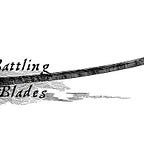Why are swords generally curved?
Unveiling the Historical Legacy, Functional Brilliance, and Cultural Elegance Behind the Curvature.
Swords, timeless symbols of warfare and craftsmanship, come in various shapes and sizes. One distinctive feature that has captivated enthusiasts throughout history is the curvature of certain blades. This article seeks to unveil the reasons why swords are curved, exploring the historical, cultural, and functional aspects that contribute to the elegance and effectiveness of these unique weapons.
Understanding the Anatomy of a Sword:
- Blade Anatomy: Beyond the Edge Before delving into the curvature, it’s essential to understand the basic components of a sword. A sword comprises three main parts: the blade, the hilt, and the handle. The blade, in particular, plays a crucial role in determining the sword’s functionality and style.
- Curvature Dynamics: The Bend Matters The curvature of a sword is not a random design choice; it serves both functional and aesthetic purposes. The degree of curvature varies among different sword types, each catering to specific combat techniques or cultural preferences.
Historical Evolution of Curved Swords:
- Ancient Origins: Practicality in Battle The earliest curved swords date back to ancient civilizations, where metallurgical limitations and the need for effective cutting and thrusting techniques influenced their design. Curved blades proved advantageous in slicing through opponents and dealing with effective cutting blows.
- Asian Influence: The Katana’s Graceful Curve In Japan, the Katana emerged as a cultural and martial masterpiece. The gentle curve of the katana’s blade enhances its cutting efficiency, allowing for swift and precise strikes. The curvature also aids in drawing and sheathing the sword with fluidity, a crucial aspect in samurai traditions.
- Middle Eastern Mastery: The Scimitar’s Unique Edge The Middle East introduced the scimitar, featuring a distinctive curve that optimizes slashing and cutting motions. This design is well-suited for mounted combat, where the curved blade allows for more effective strikes from horseback.
Functional Advantages of Curved Blades:
- Effective Slashing: The Cutting Edge The primary advantage of a curved sword lies in its effectiveness in slashing motions. The curvature allows for a more extended cutting edge, increasing the surface area that makes contact with the target. This proves especially useful in cutting through armor or inflicting deeper wounds.
- Thrusting Precision: The Point of Balance Contrary to common belief, curved swords are not solely designed for slashing. The curvature, when strategically implemented, enhances the sword’s thrusting capabilities. The point of balance shifts towards the tip, allowing for precise thrusts while maintaining overall stability.
Cultural Significance:
- Symbolism in Design: The Katana’s Grace In Japanese culture, the katana goes beyond being a weapon; it is a symbol of honor and discipline. The gentle curve is not just functional but also adds an element of grace and aesthetics, reflecting the cultural values embedded in the art of swordsmanship.
- Middle Eastern Aesthetics: The Scimitar’s Elegance The Scimitar, with its graceful curve, is not only a formidable weapon but also a symbol of cultural identity. Its aesthetic appeal is deeply rooted in Middle Eastern art and traditions, embodying a blend of functionality and elegance.
Modern Interpretations and Variations:
- Fusion of Tradition and Innovation: In contemporary times, swordsmiths and designers continue to explore the balance between tradition and innovation. Modern curved swords draw inspiration from historical designs while incorporating advancements in metallurgy and craftsmanship.
- Ceremonial Swords: A Testament to Tradition Beyond combat, curved swords find a place in ceremonial contexts. Elaborately crafted ceremonial swords often feature graceful curves, paying homage to historical traditions and serving as symbols of honor and prestige.
Conclusion:
The curvature of swords is not a mere aesthetic choice; it is a reflection of the intricate interplay between function, history, and culture. From the graceful katana to the distinctive scimitar, the bend in a sword’s blade enhances its cutting and thrusting capabilities, contributing to its effectiveness in battle. As we appreciate the elegance in bend, we gain a deeper understanding of how the curvature of swords has shaped martial traditions and cultural identities throughout the ages.
